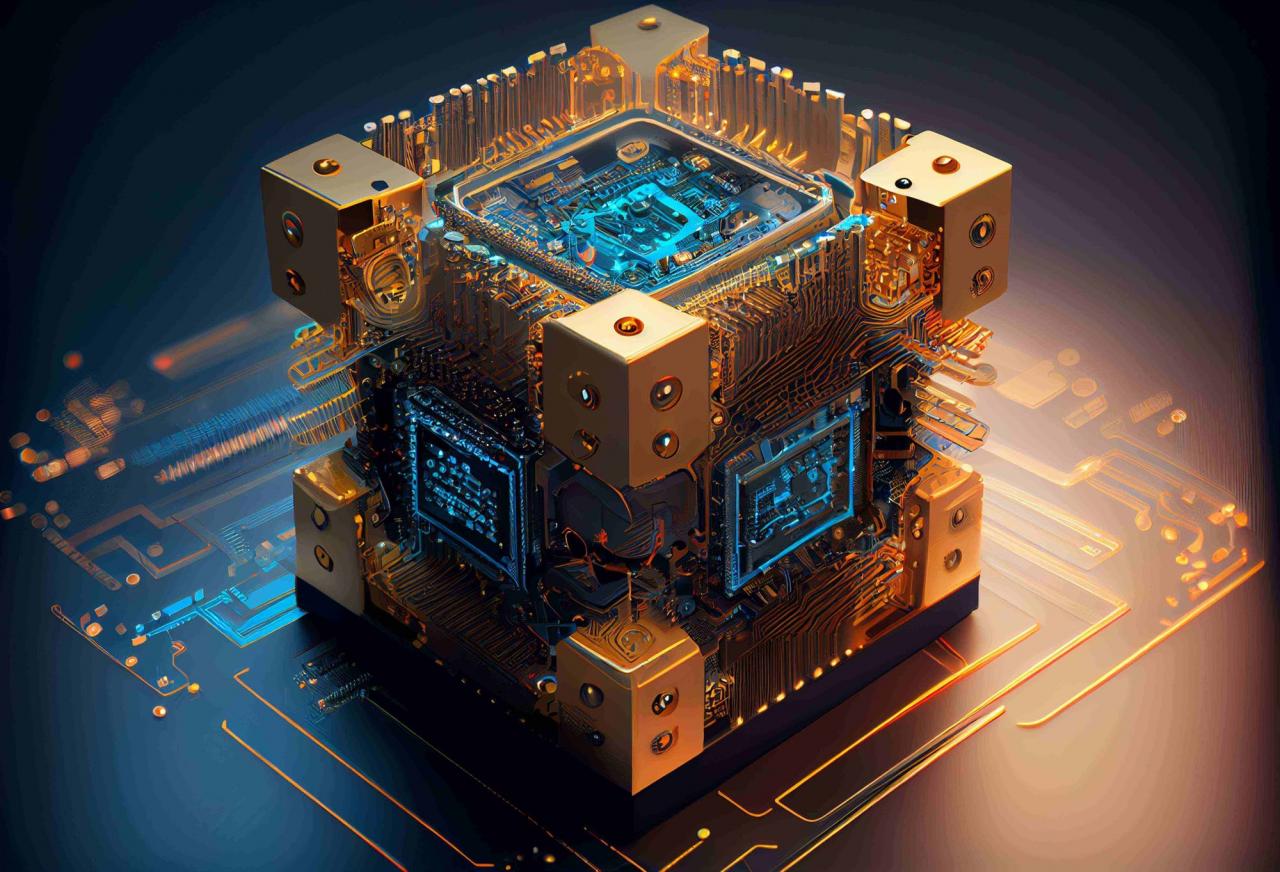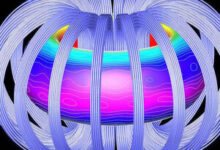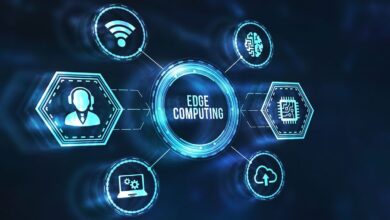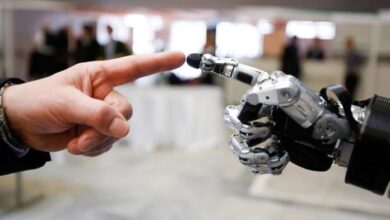The Quantum Leap in Computing Offer Powerful Performance

The world of technology is on the cusp of a revolution, one that promises to redefine the very foundations of computing as we know it. For decades, traditional computers, governed by the principles of classical physics, have followed Moore’s Law, doubling in power roughly every two years. However, we are rapidly approaching the physical limits of this growth. This is where quantum computing enters the picture, offering a paradigm-shifting approach that leverages the bizarre and powerful rules of quantum mechanics to perform calculations with unprecedented speed and complexity. This article will delve into the core concepts of quantum computing, its potential applications, the monumental challenges it faces, and the ethical considerations that will shape its future.
The Core of the Quantum Realm

To grasp the power of quantum computing, you first have to understand the fundamental difference between a classical bit and a quantum bit, or qubit.
Classical Computing’s Foundation
In a classical computer, information is stored in bits, which can only exist in one of two states: 0 or 1. This binary system is the language of all modern computers, from your smartphone to the most powerful supercomputers. To perform a calculation, these bits are manipulated using logical gates, a process that is both precise and predictable.
Quantum Computing’s Power
A qubit, on the other hand, is a particle (like an electron or a photon) that can exist in multiple states simultaneously. This property is known as superposition. A single qubit can be a 0, a 1, or both at the same time. This is a crucial concept, as it allows a quantum computer to process a vast number of possibilities at once, in stark contrast to a classical computer that must process each possibility one by one.
The real power emerges when multiple qubits are linked together in a phenomenon called entanglement. When two or more qubits are entangled, the state of one is directly linked to the state of the others, no matter how far apart they are. This means that a change in one entangled qubit instantaneously affects the others. Entanglement exponentially increases the computational power, allowing a quantum computer with just a few hundred qubits to outperform the most powerful supercomputers on Earth for specific types of problems.
The Architecture of a Quantum Machine
Building a quantum computer is a monumental engineering challenge. Unlike classical computers that operate at room temperature, most quantum computers require incredibly cold environments to maintain the delicate superposition and entanglement of qubits.
A. Superconducting Qubits
One of the most promising and widely researched approaches involves using superconducting circuits. These circuits are cooled to near absolute zero (colder than deep space) to eliminate all electrical resistance and allow the qubits to exist in their quantum states. The qubits are then manipulated using microwave pulses.
B. Ion Trap Qubits
This method uses lasers to suspend and cool individual ions (atoms with a missing electron). These ions act as qubits and are manipulated using lasers. This approach is known for its high precision and long-term stability.
C. Photonic Qubits
Another approach uses photons, or particles of light, as qubits. This method operates at room temperature and uses fiber optics and specialized mirrors to manipulate the quantum states.
D. Quantum Annealing
This is a specific type of quantum computing designed to solve optimization problems. Companies like D-Wave have built quantum annealers that are highly effective for specific tasks, though they are not considered “universal” quantum computers that can solve any problem.
The hardware required for these machines is complex, expensive, and fragile. The slightest vibration, change in temperature, or electromagnetic interference can cause the qubits to lose their quantum state, a process known as decoherence. Overcoming decoherence is one of the biggest challenges in the field today.
Applications of Quantum Computing
The transformative power of quantum computing lies in its ability to solve problems that are currently impossible for classical computers. While it won’t replace your laptop for tasks like browsing the web or word processing, it will revolutionize specific, complex fields.
A. Drug Discovery and Materials Science
Quantum computing is perfectly suited for simulating the behavior of molecules and chemical reactions. This capability could lead to groundbreaking advancements:
- Accelerating Drug Development: By accurately modeling how a new drug molecule will interact with a virus or a cancer cell, pharmaceutical companies could dramatically reduce the time and cost of bringing new treatments to market.
- Creating Novel Materials: Scientists could design and test new materials with properties like superconductivity or enhanced durability at a molecular level, leading to more efficient batteries, stronger building materials, and more.
- Sustainable Chemistry: By simulating chemical processes with high fidelity, quantum computers could help develop more efficient fertilizers, clean energy sources, and sustainable manufacturing processes.
B. Financial Modeling and Optimization
The financial industry generates massive amounts of data and constantly seeks to optimize complex portfolios and manage risk.
- Portfolio Optimization: Quantum computers could quickly analyze countless market scenarios to create the most profitable and risk-averse investment portfolios.
- Algorithmic Trading: The ability to process complex data sets in real-time could lead to more sophisticated and profitable trading algorithms.
- Fraud Detection: Quantum algorithms could identify patterns of fraudulent activity in vast financial networks with unparalleled speed and accuracy.
C. Artificial Intelligence and Machine Learning
Quantum computing holds the potential to supercharge AI and machine learning.
- Enhanced Machine Learning: Quantum algorithms could process massive datasets faster, enabling more complex and powerful AI models. This could lead to more accurate medical diagnoses, better weather forecasting, and more advanced autonomous systems.
- Quantum Neural Networks: Researchers are exploring the development of quantum versions of neural networks, which could learn and reason in ways that are currently impossible.
- Solving Optimization Problems: Many AI challenges, such as training complex models, are essentially optimization problems. Quantum computers could solve these far more efficiently.
D. Cybersecurity and Cryptography
Quantum computing presents both a grave threat and a powerful solution to modern cryptography.
- Breaking Current Encryption: A sufficiently powerful quantum computer could, in theory, break the most widely used encryption standards (like RSA) that secure everything from online banking to government communications. This is a major concern for global security.
- Developing Quantum-Safe Encryption: To counter this threat, cryptographers are developing new quantum-resistant algorithms that can withstand attacks from both classical and quantum computers.
The race to develop quantum-safe cryptography is a critical priority for governments and corporations worldwide.
Challenges and the Quantum Future

Despite the immense potential, quantum computing is still in its infancy. Building a fault-tolerant, universal quantum computer is a decade-long challenge.
A. Overcoming Decoherence and Noise
The extreme fragility of qubits is the biggest obstacle. Even a tiny bit of interference can cause a qubit to lose its quantum state, introducing errors into calculations. Researchers are working on sophisticated quantum error correction techniques to mitigate this issue. This will require building quantum computers with millions of physical qubits to create a handful of highly stable, logical qubits.
B. Scaling Up
Scaling up the number of qubits is a major engineering hurdle. As the number of qubits increases, the complexity of controlling and connecting them grows exponentially. Building a computer with hundreds of thousands or even millions of qubits is a logistical and manufacturing nightmare.
C. The “Quantum Advantage”
The ultimate goal is to achieve quantum advantage, where a quantum computer can solve a problem that is practically impossible for any classical supercomputer. We have seen early examples of this, but it is yet to be demonstrated on a problem of commercial or scientific significance.
The development of quantum computing will likely happen in stages, with special-purpose machines solving specific problems before we arrive at a universal quantum computer. This is a collaborative effort involving tech giants, startups, governments, and academic institutions worldwide.
Ethical Considerations of the Quantum Age
The immense power of quantum computing comes with a responsibility to address its ethical implications before they become a reality.
A. Security and Privacy
The ability of a quantum computer to break current encryption poses a severe threat to global data security. This necessitates a global effort to transition to new, quantum-resistant cryptographic standards. Failing to do so could render all of today’s encrypted data vulnerable.
B. The Quantum Divide
As with any advanced technology, there is a risk of a quantum divide, where only a few wealthy nations or corporations have access to this transformative technology. This could create a new form of inequality, concentrating power and scientific progress in the hands of a select few.
C. Military Applications
The potential for quantum computing to enhance military capabilities, from breaking enemy codes to optimizing logistics, raises serious concerns about an arms race. International dialogue and treaties will be necessary to ensure responsible use.
Conclusion
The journey of computing from vacuum tubes to silicon chips has been a testament to human ingenuity. The next chapter, a quantum leap into a new realm of physics, promises to be the most revolutionary yet. The fundamental shift from classical bits to quantum bits, leveraging the mind-bending principles of superposition and entanglement, is set to unlock unprecedented computational power. This power will not be for everyday tasks, but for solving the world’s most complex and intractable problems. Imagine a future where we can simulate new drug molecules to cure diseases like cancer in a fraction of the time, where we can design materials that make clean energy sources more efficient, and where we can model climate change with unparalleled accuracy to find real solutions.
However, the path to this quantum future is fraught with monumental challenges. The fragility of qubits, the immense engineering required to build and scale these machines, and the constant threat of decoherence are formidable obstacles that researchers are working tirelessly to overcome. The “quantum advantage,” the point at which a quantum computer definitively outperforms all classical computers on a useful problem, is the holy grail of this field and a testament to the fact that we are still in the early stages of this technological evolution. Moreover, as the technology matures, we must proactively address the profound ethical and societal questions it raises. The very fabric of our digital security, built on encryption that can be easily broken by a quantum machine, must be re-engineered. The risk of a “quantum divide” must be mitigated to ensure that the benefits of this technology are not hoarded by a privileged few. And as we continue to push the boundaries of science, we must do so with a clear ethical compass, ensuring that this incredible power is used for the betterment of all humanity. The quantum leap is not just about faster calculations; it’s about a fundamental shift in our ability to understand and shape the world around us, and it is a journey we are just beginning.












